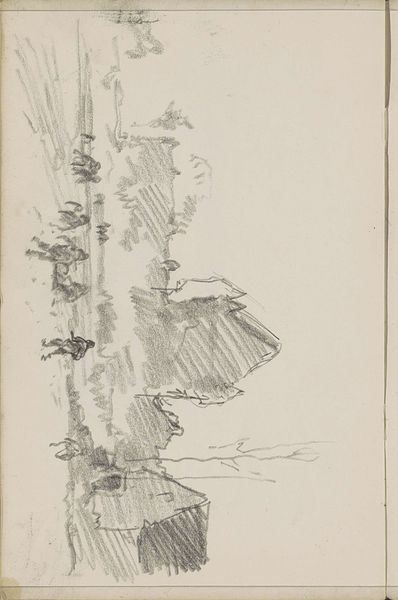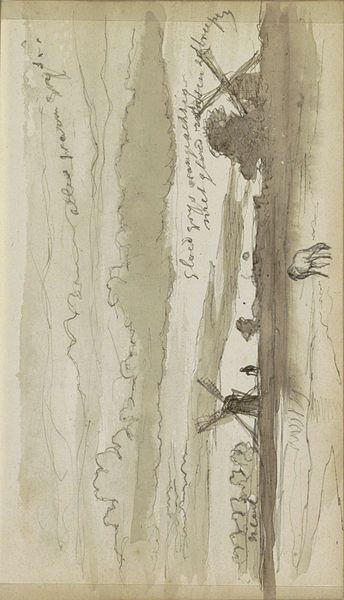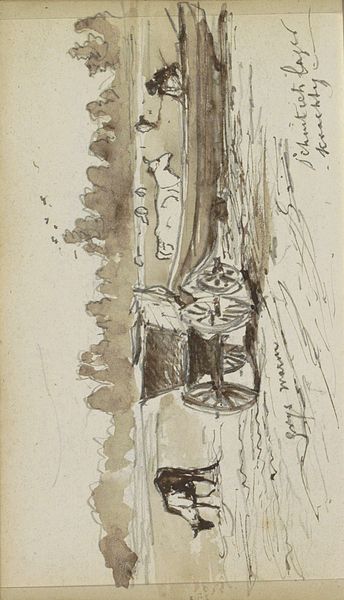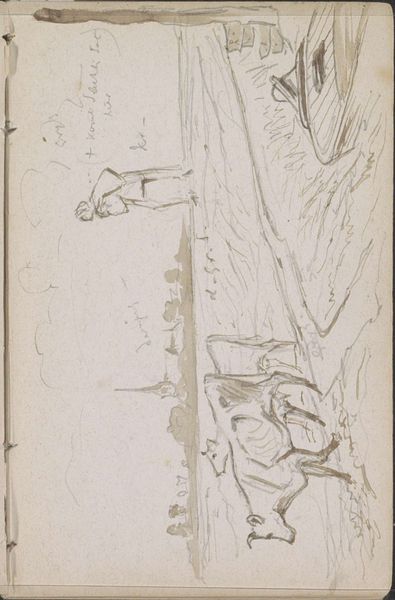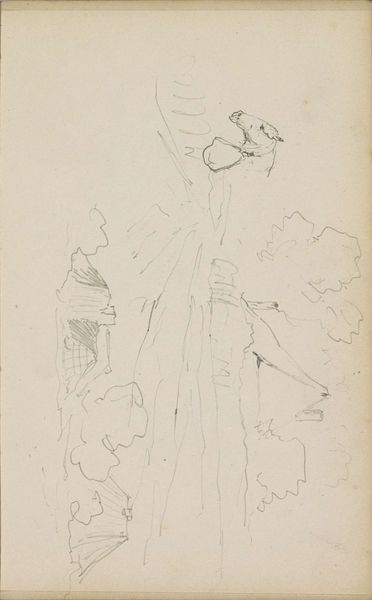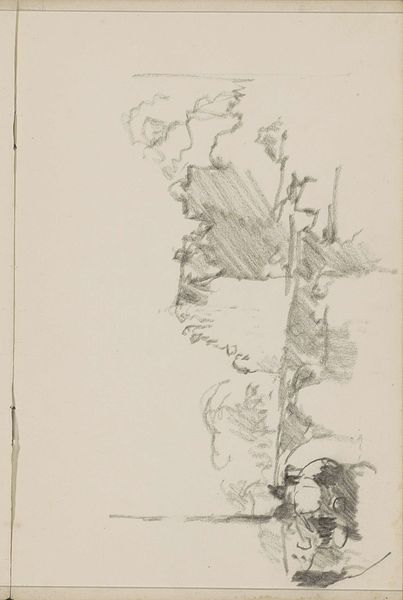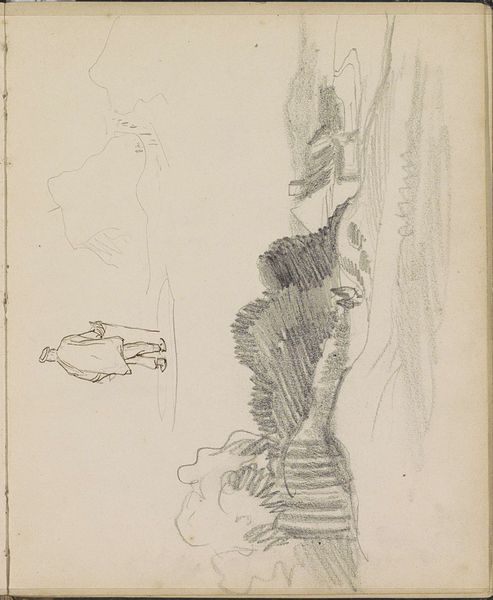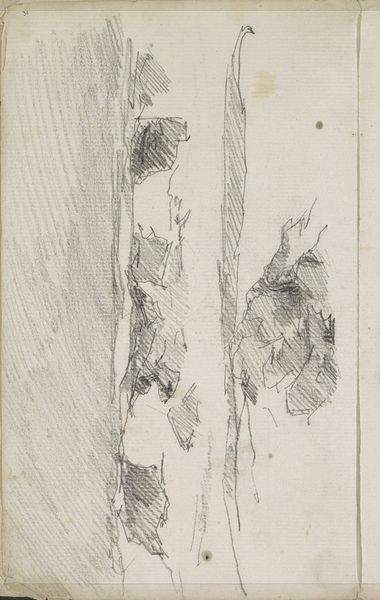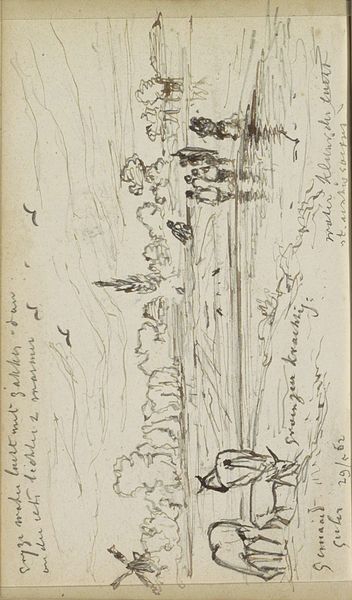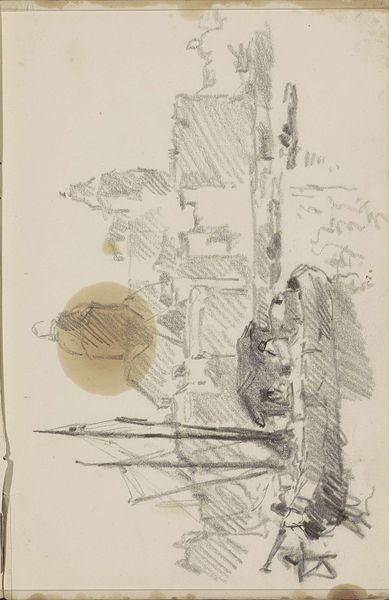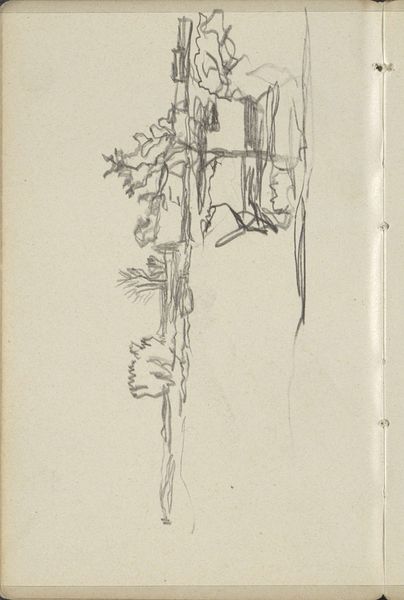
drawing, paper, watercolor, pencil
#
drawing
#
landscape
#
paper
#
watercolor
#
pencil
#
watercolour illustration
Copyright: Rijks Museum: Open Domain
Editor: Here we have "Eikenhout bij Rotte" – or "Oak Wood at Rotte" – a drawing by Johannes Tavenraat, made between 1860 and 1867 using pencil, watercolor and paper. The subdued colors create a somewhat melancholic, almost somber, atmosphere. What do you see in this piece, beyond just a simple landscape? Curator: I see a study in the relationship between humanity and nature, viewed through the lens of its time. This drawing, while seemingly tranquil, emerged during a period of significant social and political upheaval. Consider the Netherlands in the mid-19th century. Industrialization was burgeoning, leading to urbanization and displacement. Did Tavenraat use the landscape as a refuge, or was he observing its changes? Editor: That’s an interesting point! I hadn't considered it in the context of urbanization. So you're saying, perhaps the presence of the animals and implied lack of human presence reflects that push and pull between the rural and the urban? Curator: Exactly! Think about who was typically excluded from depictions of idealized nature during this period. Consider its representation in art history. Who gets to belong and who is conspicuously absent, and why? Are those ideas reflected here? This wasn't just a scene; it was a statement – intentional or not. Editor: I suppose I saw it as just a peaceful image, but it is intriguing to think about those other stories, of belonging and exclusion, possibly being present here. Curator: It reveals how landscapes can function as ideological canvases. Each work of art invites a conversation that transcends its aesthetic appeal, and enters into the social constructs it mirrors and shapes. Editor: I will certainly look at landscapes with new eyes now!
Comments
No comments
Be the first to comment and join the conversation on the ultimate creative platform.
